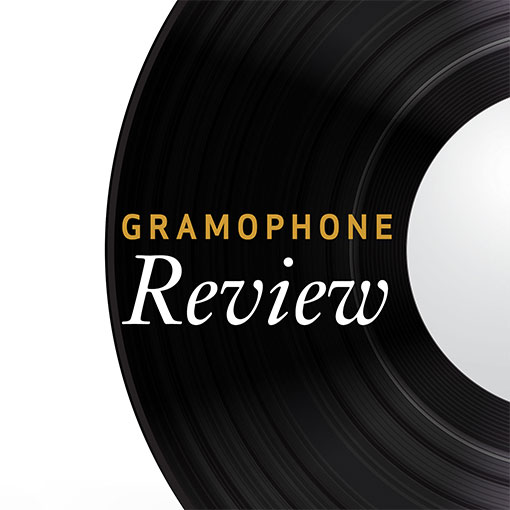Mozart Piano Concertos 19 & 27
View record and artist detailsRecord and Artist Details
Composer or Director: Wolfgang Amadeus Mozart
Label: The Originals
Magazine Review Date: 12/1997
Media Format: CD or Download
Media Runtime: 70
Mastering:
Mono
ADD
Catalogue Number: 449 722-2GOR

Tracks:
| Composition | Artist Credit |
|---|---|
| Concerto for Piano and Orchestra No. 19 |
Wolfgang Amadeus Mozart, Composer
Berlin Philharmonic Orchestra Clara Haskil, Piano Ferenc Fricsay, Conductor Wolfgang Amadeus Mozart, Composer |
| Concerto for Piano and Orchestra No. 27 |
Wolfgang Amadeus Mozart, Composer
Bavarian State Orchestra Clara Haskil, Piano Ferenc Fricsay, Conductor Wolfgang Amadeus Mozart, Composer |
| Sonata for Piano No. 2 |
Wolfgang Amadeus Mozart, Composer
Clara Haskil, Piano Wolfgang Amadeus Mozart, Composer |
Author: Bryce Morrison
The greatness of Clara Haskil and Dinu Lipatti – friends, colleagues and fellow-Romanians – may be unmistakable, but it is hard to define. Yet without wishing to deny the individuality of each artist it is possible to detect a family likeness in their approach to Mozart. Clearly, they were kindred spirits, recognizing in each other the loftiest ideals, humility, wit and a central luminosity. How else can one describe Haskil’s way with K595, among the most comprehensive and satisfying performances of this sublime masterpiece ever recorded. Time and again you are struck by a wealth of nuance beneath a deceptive, outwardly imperturbable surface, of a clear-sightedness thinly veiling “the eternal note of sadness”. Plain-speaking at one level she surprises you with a sudden drop in tone, a lightening of darkness or a turn of phrase made all the more meaningful because of the essential economy of such fine detailing. More Olympian music-making would be hard to imagine.
The F major Concerto, K459, is also a marvel of humour and affection, suitably less subdued than K595 yet sensitive to every ambiguity in Mozart’s argument. Once again Haskil finds crystalline and irreproachable solutions to even the most elusive poetic problems. Without indulging in conscious exploration she discovers every facet of this concerto and she is memorably partnered by Fricsay and the Berlin Philharmonic. Her vitality and keenness in the finale, too, are a reminder of a pianist who in her youth carried works such as the Brahms Paganini Variations and Liszt’s Feux follets in her repertoire. In other words, the perfection of her technique allows her unimpeded access to the very centre or essence of all these works.
Finally, the F major Sonata, with its central reminder of the siciliana rhythm of the A major Piano Concerto, K488, is played in a style that silences all possible criticism and includes a finale of an astonishing, life-enhancing nimbleness. The recording dates from 1961 and is already a considerable improvement on the 1957 sessions for the concertos. But with performances “as perfect as one has a right to expect this side of the Great Divide” (as RO so admirably puts it in his accompanying notes) there is little cause for complaint. Even Clara Haskil herself, modest to the last, rejoiced, declaring, “at last, a recording of me that is at least 80 per cent good”.'
The F major Concerto, K459, is also a marvel of humour and affection, suitably less subdued than K595 yet sensitive to every ambiguity in Mozart’s argument. Once again Haskil finds crystalline and irreproachable solutions to even the most elusive poetic problems. Without indulging in conscious exploration she discovers every facet of this concerto and she is memorably partnered by Fricsay and the Berlin Philharmonic. Her vitality and keenness in the finale, too, are a reminder of a pianist who in her youth carried works such as the Brahms Paganini Variations and Liszt’s Feux follets in her repertoire. In other words, the perfection of her technique allows her unimpeded access to the very centre or essence of all these works.
Finally, the F major Sonata, with its central reminder of the siciliana rhythm of the A major Piano Concerto, K488, is played in a style that silences all possible criticism and includes a finale of an astonishing, life-enhancing nimbleness. The recording dates from 1961 and is already a considerable improvement on the 1957 sessions for the concertos. But with performances “as perfect as one has a right to expect this side of the Great Divide” (as RO so admirably puts it in his accompanying notes) there is little cause for complaint. Even Clara Haskil herself, modest to the last, rejoiced, declaring, “at last, a recording of me that is at least 80 per cent good”.'
Discover the world's largest classical music catalogue with Presto Music.

Gramophone Digital Club
- Digital Edition
- Digital Archive
- Reviews Database
- Full website access
From £8.75 / month
Subscribe
Gramophone Full Club
- Print Edition
- Digital Edition
- Digital Archive
- Reviews Database
- Full website access
From £11.00 / month
Subscribe
If you are a library, university or other organisation that would be interested in an institutional subscription to Gramophone please click here for further information.





